The final LK and LOK proposal, and LKM variants.
Last chance, as a two launch mission.
Introduction:
This is a computer translation, using DEEPL, of 3 pages of a document released by RGANTD. This covers what is thought to be the last iteration of a crewed lunar mission profile using a version of the LK Lander, and the LOK Lunar orbiter.
It required two N1 launches, one for each vehicle, to provide the extra mass needed for a much improved mission, with minimal hardware development.
It’s not just about landing on the Moon now, the LOK is upgraded into a crewed lunar orbital station, and there’s an additional rear module. The diagram also nicely shows the Soyuz style docking probe.
The LK becomes the heavy LK, (TLK or TLK), but there’s not much extra space for the second cosmonaut.
I find it particularly interesting for what it reveals of how the engineers thought, and what drove their design decisions.
Here’s the translation.
The requirements for an expedition with 2 lunar ships, docking in lunar orbit, for re-entry in southeast Europe.
The two-launch scheme under consideration is based on the use of virtually unchanged N1 launch vehicles, and involves the separate launch of the LOK and LK spacecraft, with their docking in a Lunar satellite orbit.
Conducting this docking allows us to test the operability of radio systems, control systems and structural elements that participate in spacecraft separation and docking, and thus increases the reliability of separation and docking after cosmonauts take off from the lunar surface.
The use of two N1 rockets in the mission provides a significant increase in the available weight for the payload, which provides:
Increase of LK crew to two, and of the LOK crew to three
Conversion of the LK into an active ship during rendezvous and docking, while keeping the LOK active.
Introduction of a docking unit with internal connection in order to increase reliability for the LOK and LK. (NS Note - No need to spacewalk between modules).
Creation of a crewed lunar orbital station with an active life time of about 20 days & increasing the duration of spacecraft's stay on the Moon to 14-16 days.
The results of the analysis make it possible to conclude that the proposed dual-coupling N1 rocket-and-assist system, the head fairing (except for the hatches, the possibility of preserving the scheme has not been worked out yet), rocket block G, and the launch equipment can be preserved completely without any modifications.
However, due to the increased weight and additional tasks of the two-seater LK, the Block D rocket unit must be modified to slightly increase the volume of its fuel tanks, and provide for a 14-30 day standby time in lunar orbit, before final activation.
To meet the latter requirement, the option of additional fuel losses during standby, and the option of supercooling the fuel during refuelling, (which is estimated to increase the unit's storage time without modifications), are being considered.
The problem of ensuring spacecraft continuity is more difficult to solve, since the lunar lander is undergoing significant changes in design, and rocket block E, while for the lunar orbital spacecraft (LOK), all compartments must be reconfigured.
A three-seater LOK with internal transition could be built with the shape and structural layout of all compartments retained, except for the instrument compartment.
In addition to modifications to the instrument compartment, the following changes to the design, systems and components of the LOK must be carried out:
In the forward part of the crew compartment a new docking unit is needed, (A unit with I7K).
The propulsion control system (САУ) is moved from CA to P, the released volume is used to accommodate the 3rd chair, and the astronaut (reconfiguration of CA).
A full program of experimental ground testing, (additional aircraft tests, reconfiguration of the simulator, partial strength tests of individual design elements and some others), should be conducted.
A considerably larger amount of rework should be carried out on the lunar vehicle. However, preliminary estimates show that during the creation of a heavy lunar vehicle, (TLK), almost all of the major on-board Lunar Module systems could be preserved:
Virtually all of the LK's main on-board systems, with the exception of the on-board control system, (on-board automatics), for which it may not be possible to simply introduce transitional units.
Rocket motor / block E, intake devices and zero-gravity launch facilities.
Principal layout and structural diagrams of LK compartments, lunar landing device and the spacecraft as a whole.
A principle diagram of control of the spacecraft in flight, landing on the Moon and taking off from its surface, a diagram of interaction with means of the ground command and control complex.
This basis allows use of the basic principles of the developed LK construction, based on the experience of its flight testing.
Estimates of the volume and terms of work show that flight development of the ships for the double-launch scheme could be completed in 1975-76. At the same time, the main stages of flight testing of the complex provide for an overall increase in the number of launches of N1 rockets by 6 as compared to the previously planned program, and provides for a smooth transition from the ships of the existing scheme to the new ships of the two-launch scheme.
For fulfilment of flight testing of the expedition complex facilities a total of 13 rockets is envisaged, (N1 7L-18L) ,three of which (14L, 16L, 18L) will ensure delivery of manned LOK with a crew of three. The program foresees the implementation of the expedition at the beginning of 1976, during launches of complexes N1-21L and N1-22L.
A smooth transition to new spacecraft followed by implementation of a two-launch scheme makes it possible to use the time required for flight testing of the launch vehicle and the main elements of the complex to carry out modifications which give a new level of quality to the spacecraft, and the expedition.
Thus, the two-launch scheme with 2 spacecraft makes it possible to ensure implementation of an extended expedition to the Moon, with a landing on the surface of two cosmonauts, for a maximum of 14-16 days and the simultaneous creation of a small lunar orbital station.
Document Ends
Nick’s notes on the mission.
This is clearly an evolutionary approach, making maximum use of the hardware that was flight proven for the earlier version of the LK Lander.
The crew complement now matches Apollo, and the length of stay exceeds anything achieved by Apollo.
An orbiting station is a separate deliverable.
And just LOOK at those mission numbers! All the way up to the N1-21L! With 14L, 16L and 18L providing the orbiting stations.
It’s not explicitly mentioned, but given how worried they were about the short flight time of the basic LK, it would be astonishing if the TLK did not address this.
What came next:
After this the LOK was effectively dropped, (at least as far as using it for returning lander crew to Earth). The next wave of lander designs were direct ascent for the return to Earth, without a docking in Lunar orbit.
The Soviet engineers really did not want this rendezvous, which they saw as an unnecessary risk. Elements like mascons, (concentrations of mass within the Moon), added complexity and irregularity to orbits.
A direct ascent return also had the advantage that the cosmonauts could launch at any time, if needed.
Bonus items!
More documents and illustrations have been emerging from the RGANTD archive, and much of it is really new, really weird, or both. Try this one:
A Mars mission based on 3 N1 launches!
Now, while it’s called a manned mission, I’m not entirely convinced - it’s really small, and I don’t see anything that might be radiation shielding. So it’s possible that this is a “Zond” type mission, an unmanned flight to test crew hardware.
Statistics provided on spacecraft overviews normally include the number of crew, which is missing here.
The LKM Advanced Landers
This was included in an illustration in the main article. At the moment my understanding is that the LKM designated landers blend into the L3M landers, but this might be incorrect.
Several designs were in the running for the LKM, and some were more than a bit strange. The driving factors in the design seem to be:
Direct ascent return to Earth.
Avoid spacewalks between modules.
Here’s an example - in this case the descent module is on top of the assembly, and it looks like access is through a hatch in the heat shield! Not a great idea…
Another design option, this one has a tunnel connecting the living area with the descent module.
For this variant, it’s got a lot taller, and the descent module has moved inside the living volume. It is not clear to me if the crew would have access through the top or the side of the descent module, but I suspect the top is more likely.
Putting the descent module inside the living volume was a key design decision that was taken forward.
This editions cool link:
If you have any interest in the Soviet Space Program, this is essential.
Rockets and People
This is a translation of the biography of Boris Chertok, on of Korolev’s deputies, it covers everything from World War 2 to the N1 program, and is a first-hand account of what went on. Highly readable, and a free downloadable e-book.
(I know I have recommended this before, no apology!)
This editions cool image:
I’ve been researching Block SR, with a view to a CGI model, here’s an infographic I made.





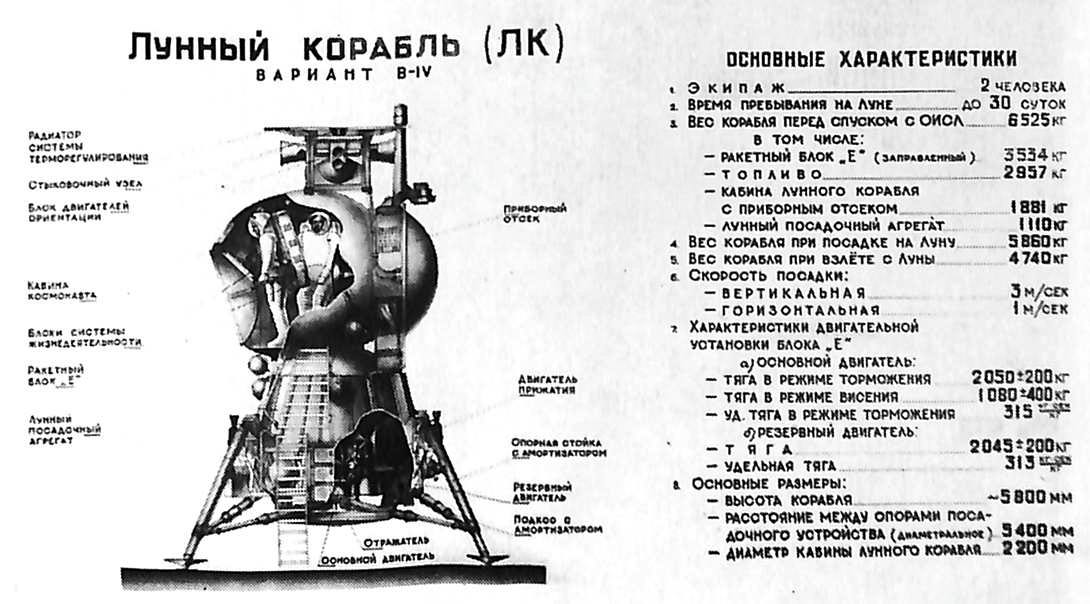

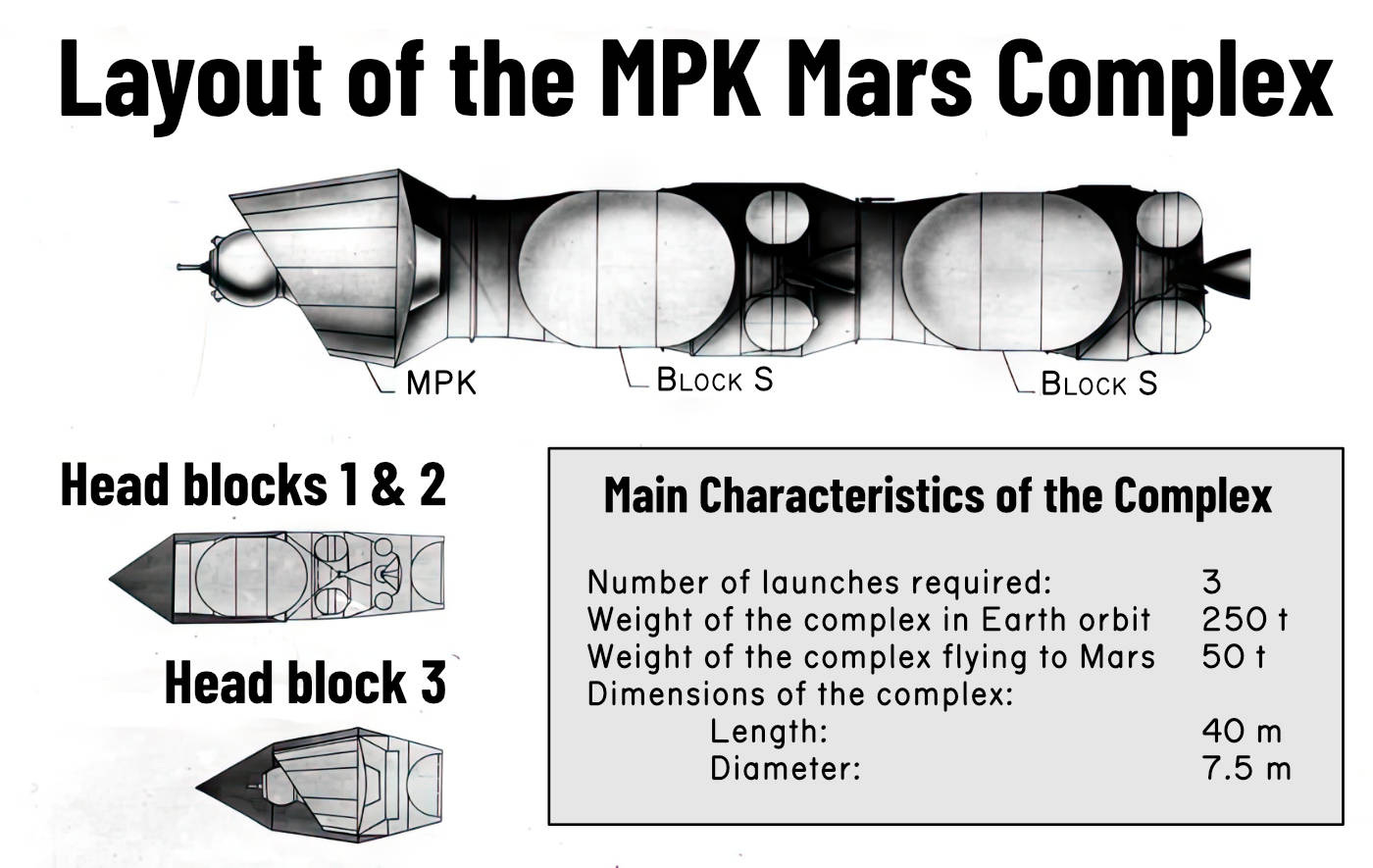
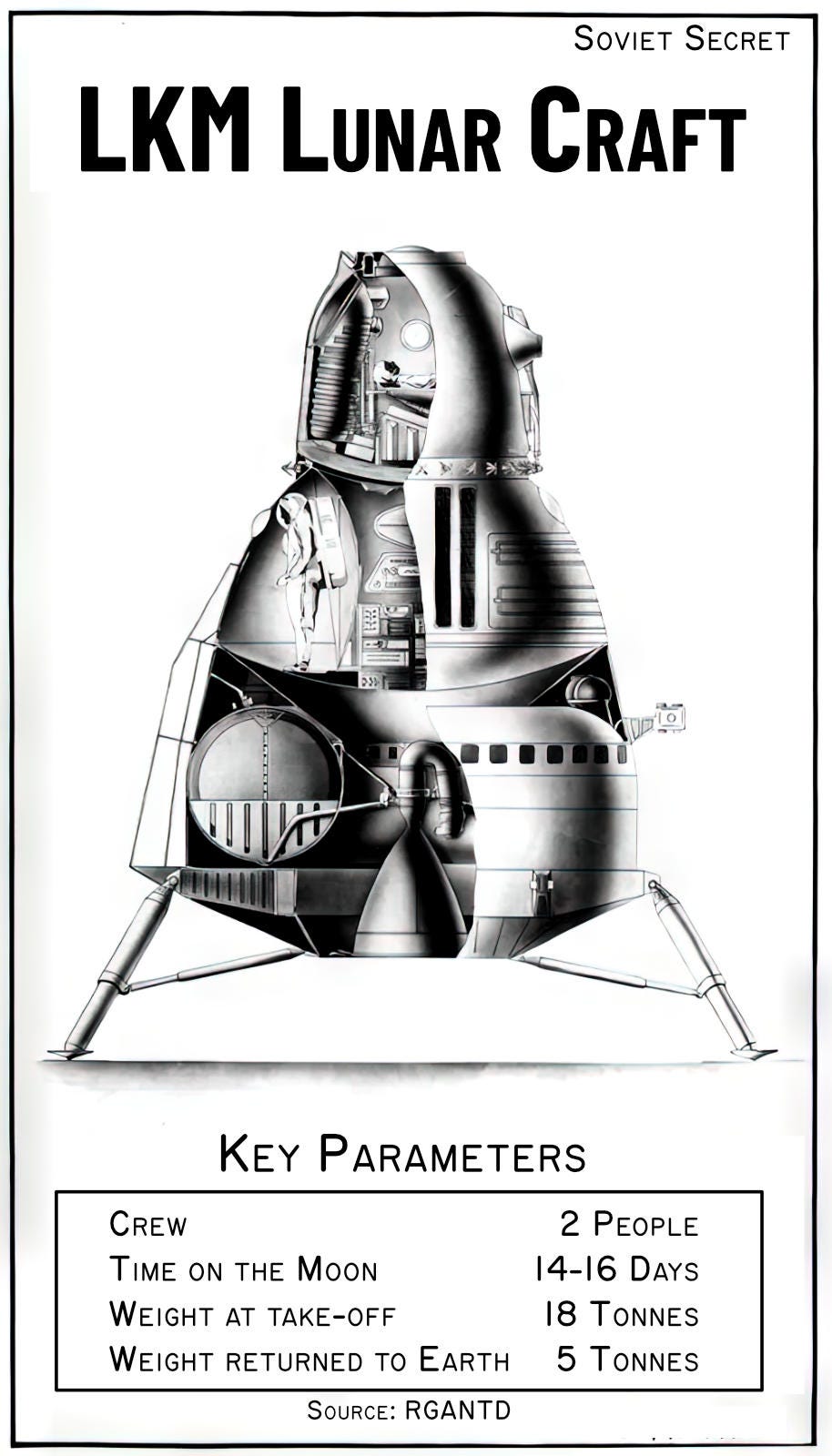
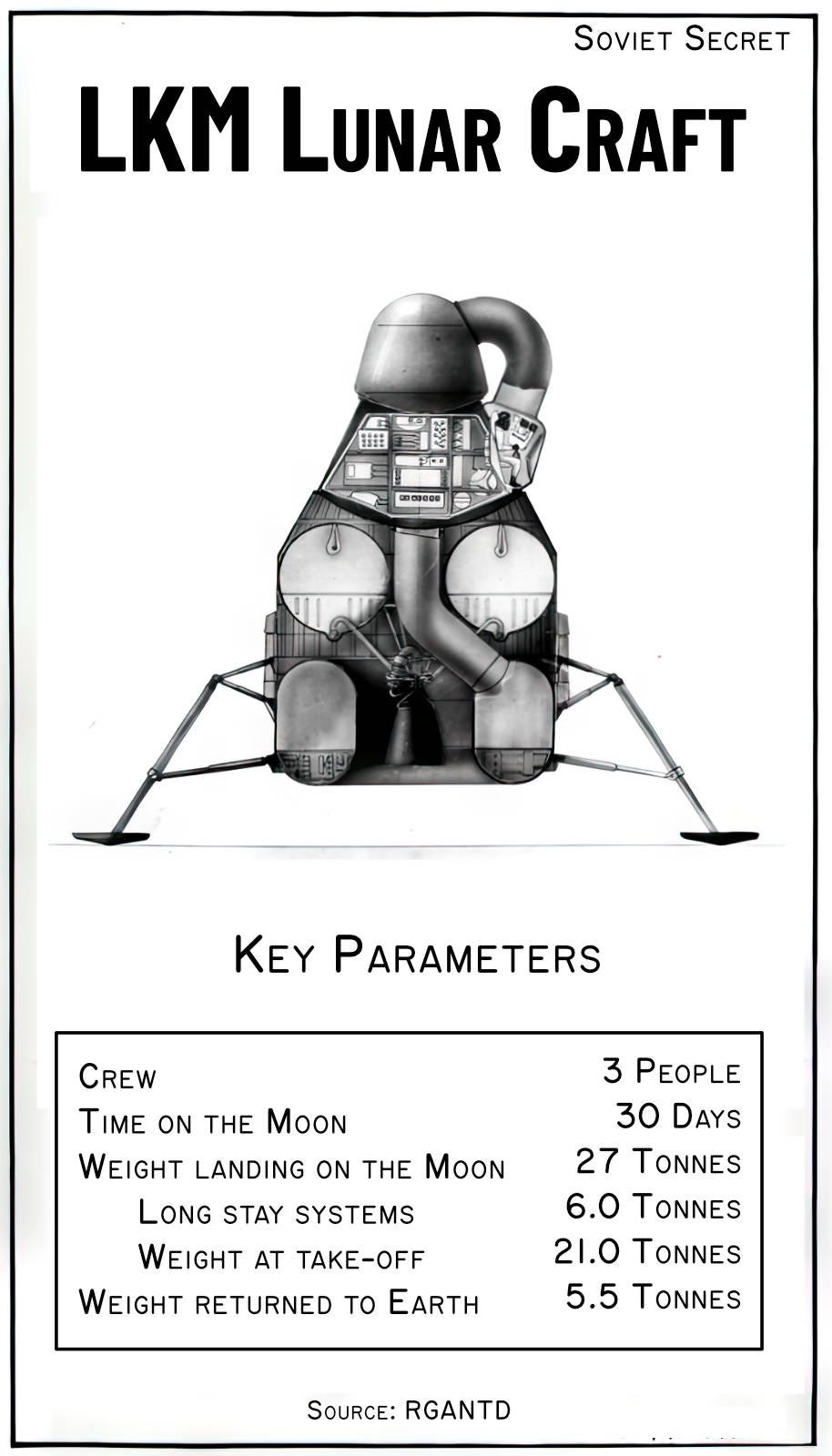


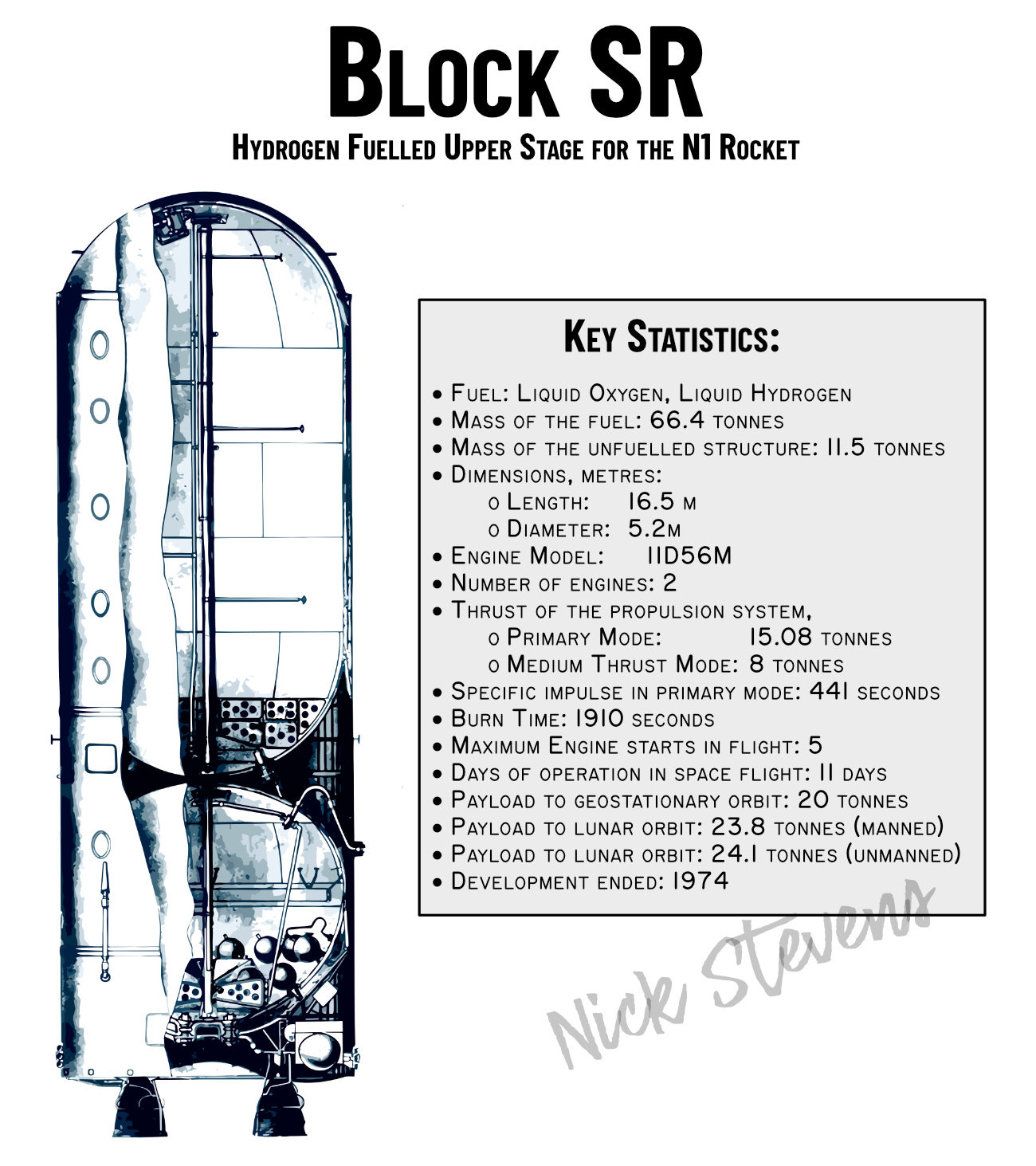
So wild to think what might have been! Thanks for sharing :)
Lovely, yummy intel ! Good stuff!